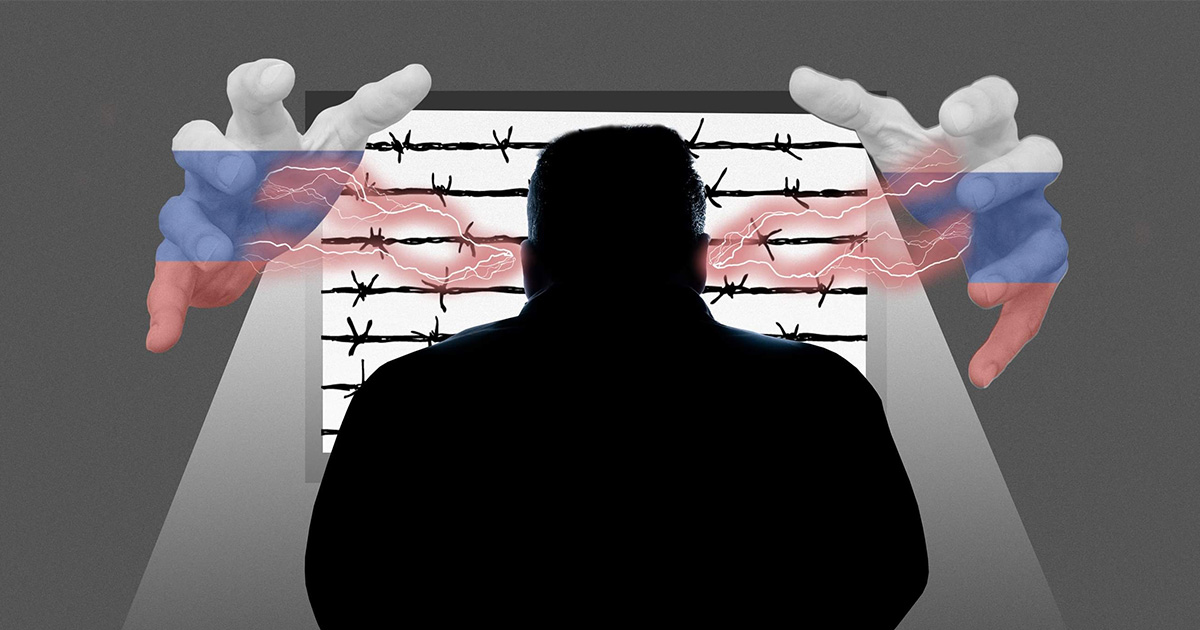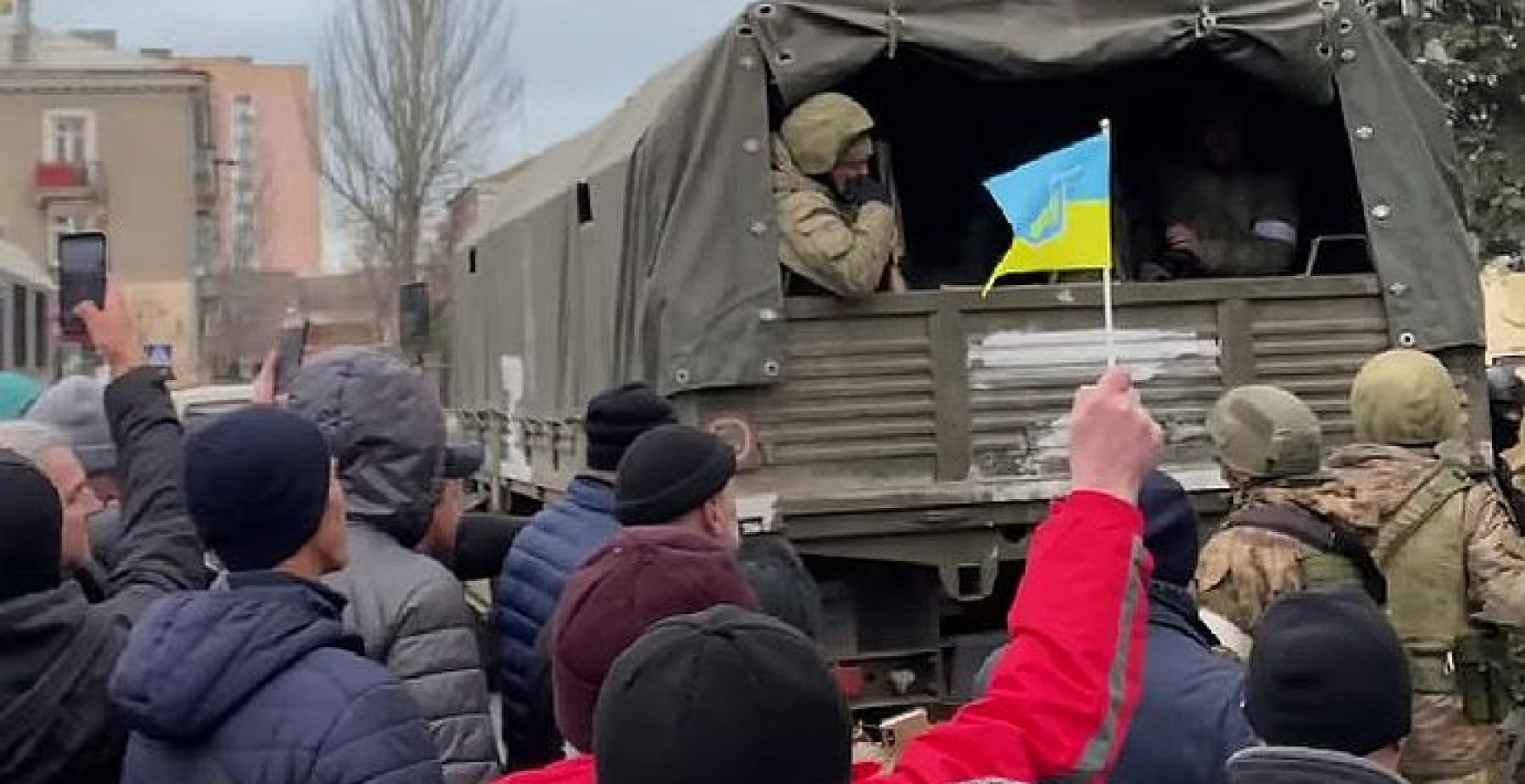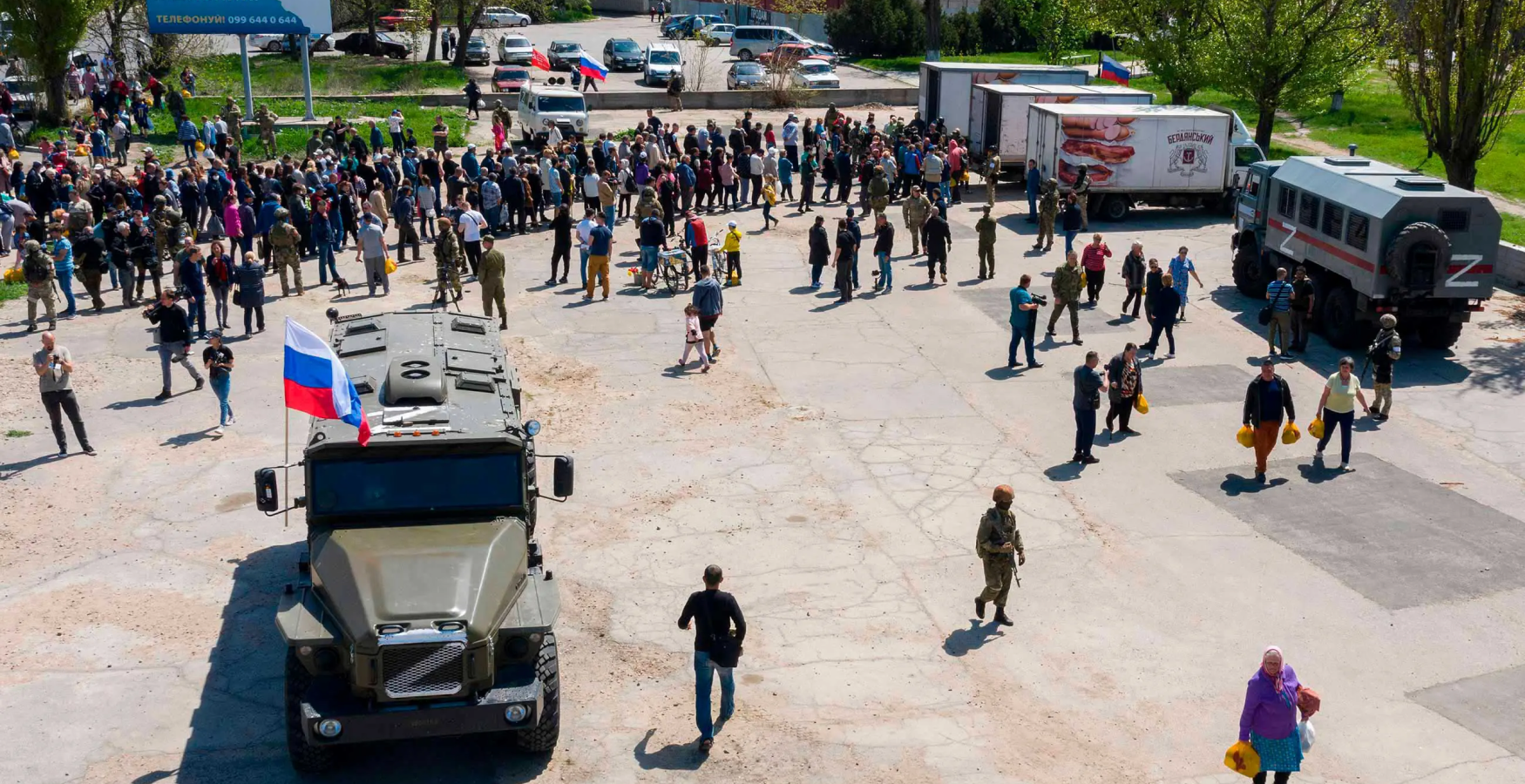City of Terror. What is happening in the occupied Berdiansk and its main torture chamber — colony No. 77
Stanislav Miroshnychenko, Media Initiative for Human Rights

All the characters of this article talk about the pressure from the Russian occupying forces on the local population. There is no signal of Ukrainian networks, television, or radio in the city. Russian propagandists use this to impose their vision of the war. Berdiansk has turned into a city of total terror, spies, and collaborators.
Most names in the text have been changed for safety reasons.
On February 27, 2022, the Russian army entered Berdiansk. On the same day, they occupied the administrative buildings and two military units of Ukrainian border guards, who had left the city the day before. According to Vasyl, the employees of the prosecutor's office, the SBU, and the police also left Berdiansk — the city was left unprotected. The townspeople decided to defend it on their own — they went out to protest. The first rally was held on February 28: people sang the Ukrainian national anthem, shouted anti-Putin slogans, and demanded that the Russian army withdraw. As Vasyl recalls, there were about a hundred demonstrators. The Russians did not know how to react, so they took their equipment out of the city center.

"People liked that they had Russians on the leash," says the man. "That's why they started holding rallies every day at noon."
Organized rallies against the Russian Federation began on March 5. People usually started from the city executive committee, and from there they walked along the central street to Prymorska Square. And then back the same way. Vasyl says that the rallies were almost the only opportunity to hear information about the war since the television and radio were turned off in Berdiansk with the beginning of the occupation.
Rallies were held every day, and the number of protesters was also increasing every day. However, it was evident that the Russians would not put up with the protests. The worrying sign was on March 15, when police vans lined up close to the rally. Then the protesters were carrying a 53-meter Ukrainian flag. No one was detained. The next day, a soldier who took part in the Anti-Terrorist Operation was kidnapped from a coffee shop.
Despite this, the protest took place again on March 17. At the same time, the Russian military began hunting down all those who had a pro-Ukrainian position. They were detained one at a time, sometimes in whole groups. According to eyewitnesses, there are many traitors in the city. Locals give Russians information about those who served in the Armed Forces of Ukraine, had relations with law enforcement agencies or the authorities, or at least once expressed support for Ukraine. Those people are promised a reward in return for this information.
According to a former soldier from Berdiansk, the Russians promise 10,000 Russian rubles for information about his whereabouts. He told "News of Pryazovia" about this (a project of "Radio Liberty"). He has changed six addresses. Those who are caught are tortured: "I have an acquaintance whose friend was a soldier in 2014. He was caught and beaten, electrocuted for a week, and then released. My friend saw him later — he was pale, gray-haired, like a match."
The Russians hunt not only the military personnel. Everyone is under suspicion. There are even special chatbots in social networks, through which Berdiansk residents are encouraged not to be afraid to turn in "spies," "saboteurs," and those who engage in subversive activities against the Russians.
First torture chamber — the police building
Those who are kidnapped are taken either to the police station or to the Berdiansk correctional facility. The police work with prisoners in special interrogation rooms with chairs built into the floor in the center.
Mykhailo was interrogated. "They ordered me to take off my pants," says the man. "When I asked why, I was hit on the head at the same moment. One of those who interrogated me was furious. He started kicking me. He kicked and kicked and kicked me and then ordered me to take off my pants again. I took them off. They wrapped my legs with tape."
The bound man was thrown to the floor and was beaten with a rubber baton. "They shouted that there was and is no Ukraine, that we will be destroyed. Suddenly I felt how they were attaching some clips to my earlobes. An electric current with ultrasound was passed through them," recalls Mykhailo.
Eventually, the man ended up in a cell but could not move without help. The whole body hurt, especially the ribs and kidneys. The next day, the torture continued: at gunpoint, Mykhailo was forced to record an anti-Ukrainian confession on camera, after which he was released.
The second execution house — colony No. 77, also known as "axes"
Most of those who are kidnapped are held in a local colony. Among the prisoners are mostly residents of the occupied territories of the Zaporizhzhia region, particularly Berdiansk, Melitopol, and Primorsk. According to Media Initiative for Human Rights, there are currently over a thousand people in the colony. Among them are former military personnel, civilians, teachers, and businessmen.
According to a local woman who went through the torture chamber, they try to break the prisoners so that they switch to the enemy's side. Any methods of psychological and physical pressure are used for this purpose. Apart from using electric shock, they point a gun at people or hit their fingertips.
One of those who went through the Berdiansk colony is Nazar Hordieiev, a civilian who served in the Azov regiment from 2018 to 2020.
"Several vehicles arrived with the armed military. They broke into the house, broke down the gate and the door. His wife Nastia was at home with her child and her father," says Nina, Hordieiev's mother. "They brought Nazar. He could not stand. His hands had cuts from shackles. They shot a film as if there was a gun in kid's stuff, and among the toys, in the living room, they put something that looked like a grenade launcher. They stole personal belongings, documents, gold, money, laptops, a camera, even bedding and clothes."
Two weeks later, a propaganda story was broadcast on the Crimea 24 TV channel. In it, they showed a gun that the occupiers allegedly found among the kid's things, and Hordieiev was called a drug addict.

Patrols on the streets
The most active ones are held hostage for about 2-4 months. A local named Viktor assumed that people were locked up because a "referendum" was being prepared at that time, and activists could gather people who support Ukraine.
Currently, Russian troops are patrolling the streets of Berdiansk in groups of 4-5 armed soldiers, one policeman, and one person in civilian clothes. Russians also go around the apartments, check the documents of who lives there, and demand to show real estate ownership documents.
"People who got out of the Berdiansk facility are surprised that the Moscow Nazis brought with them not only ceremonial costumes but also means of torture," says a local journalist. "They brought cars with special electrical torture devices. They brought a Stalinist arsenal from 1937 to mock the prisoners and force them to make various confessions."
If a person is wealthy, the Russians demand money or valuables. If it's the military — they are trying to recruit them. If a person is "from the street" — they force them to cooperate.
"Many abductees disappear without a trace," says Oleh Tsvilyi, a human rights activist and chairman of the Alliance of Ukrainian Unity board. "Before disappearing, people are forced to betray Ukraine and work against the state under torture. Some people are being pushed to get Russian passports."
The human rights defender believes that one of the goals of keeping people is to form an exchange fund. However, representatives of the International Committee of the Red Cross say that it is more difficult to work with civilian cases but do not explain the reasons.


